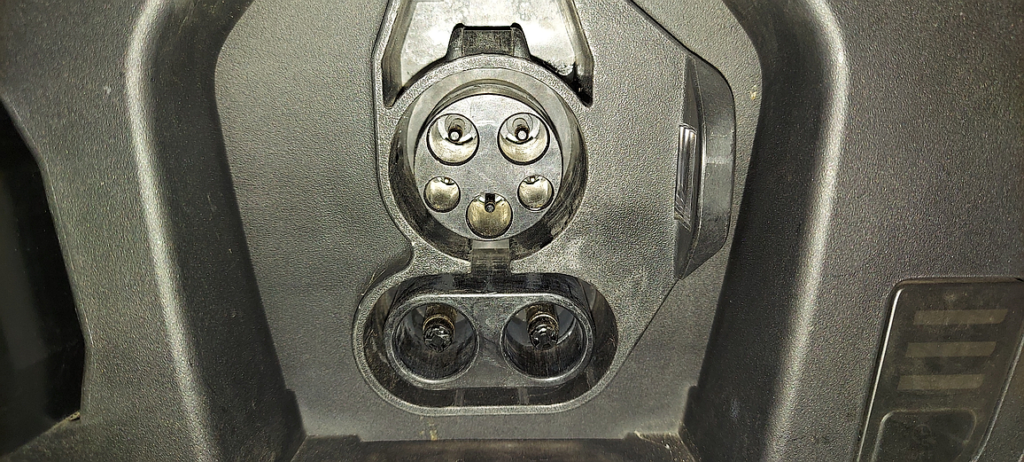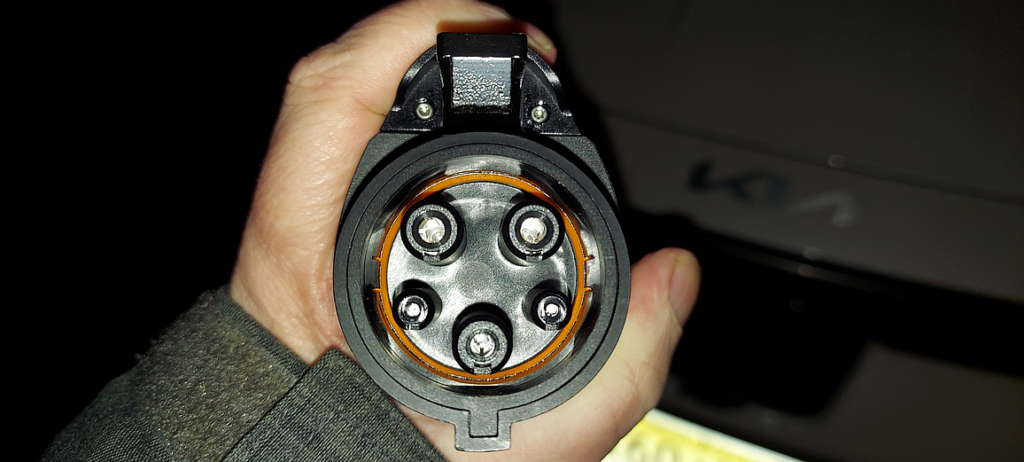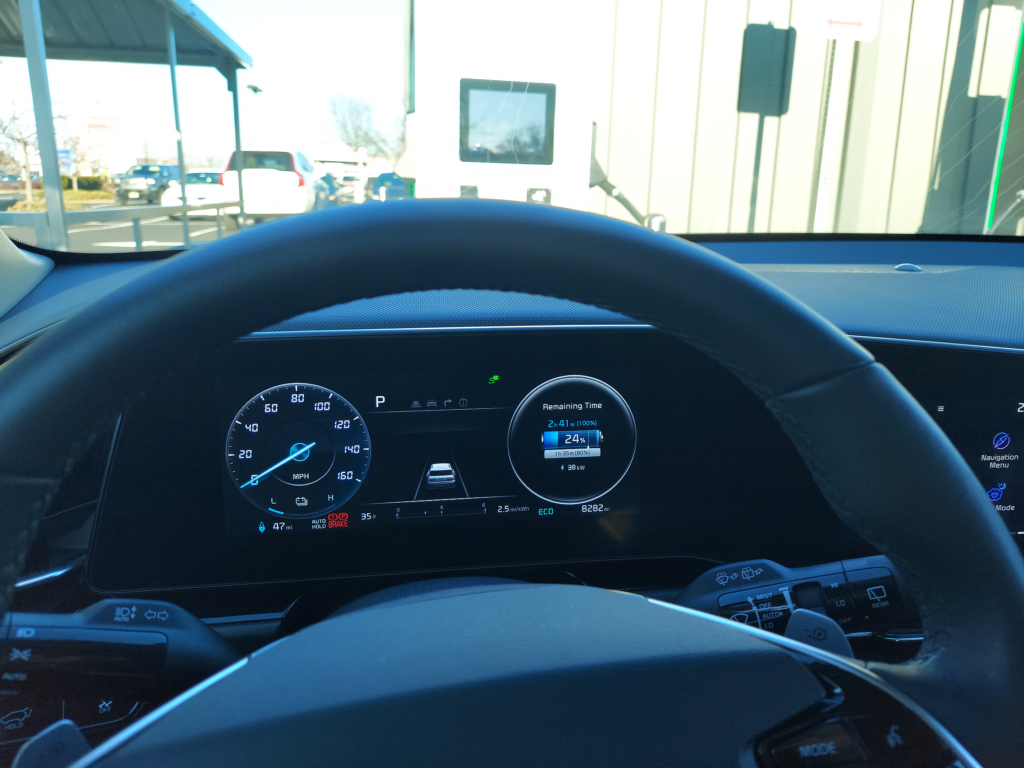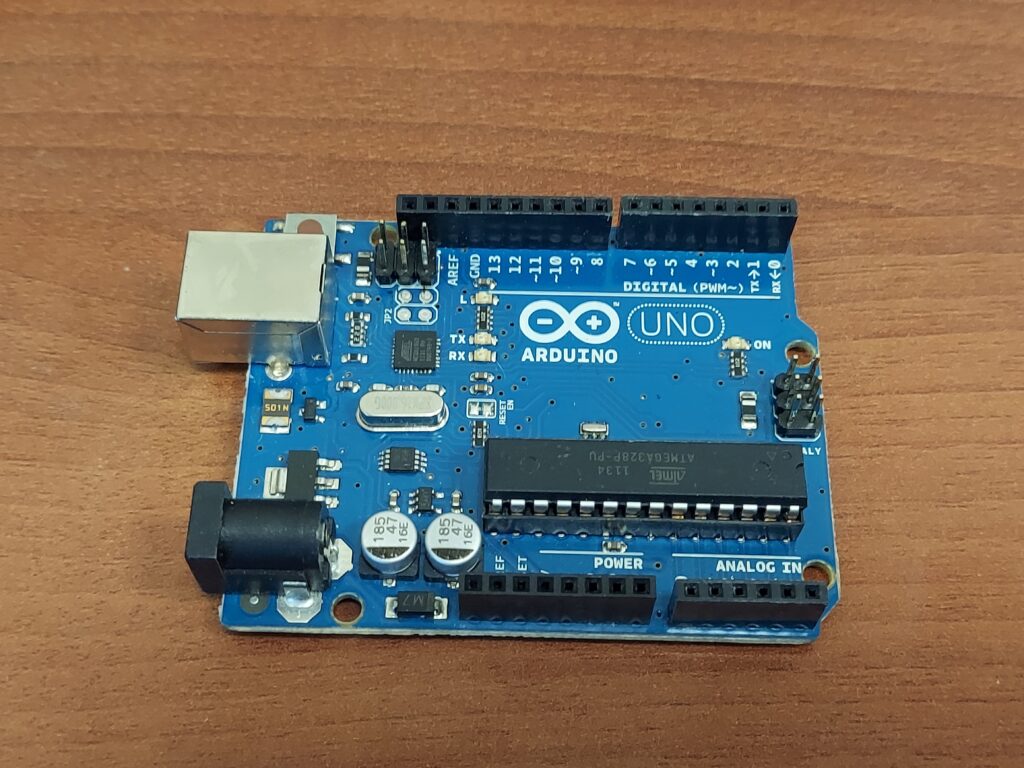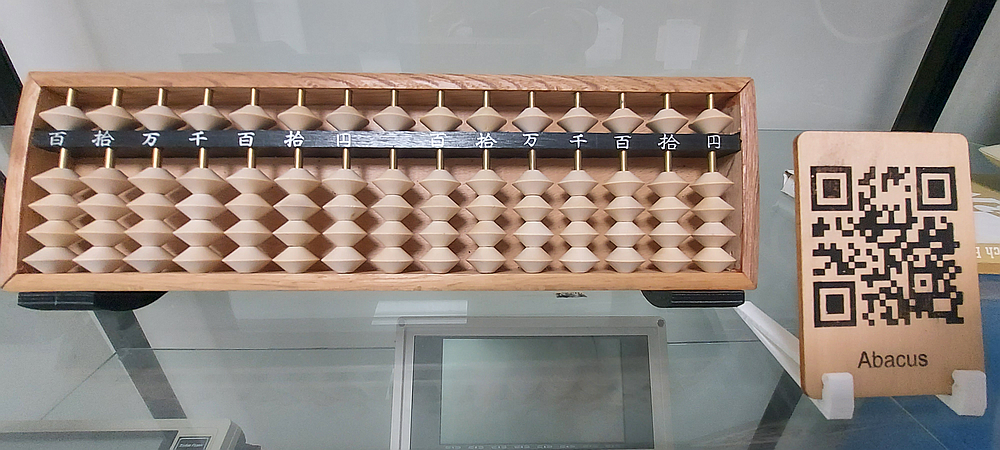
(reading a rather large number, since the “5” beads are active when displayed at this angle. Oh, well.)
The latest addition to Drexel’s Mini Museum of Computing History is a deceptively simple device: a Japanese Soroban abacus. Long before silicon chips and software, devices like this were the calculators of their day. It may be hard to imagine now, but people once counted using tally marks on sticks or by moving small stones. In fact, calculate comes from calculus, Latin for “small stone” (kartsci.org). The abacus transformed such primitive methods into a portable, fast, and reliable calculating tool. The Soroban model – with one bead on top and four on the bottom per rod – represents the pinnacle of abacus design, refined for efficiency and speed. Let’s explore the Soroban’s historical significance and how it bridges the gap between ancient counting and modern computing.
From Tally Sticks to the Soroban: A Brief History
The abacus is one of the earliest devices built specifically for computation. Counting boards with grooves or lines for moving counters were used in ancient Sumer, Egypt, Greece, and Rome. Over time, the concept evolved into framed bead abaci. The Roman abacus had beads slid in slots, and the Chinese suanpan (dating back over 2,000 years) featured a classic 5+2 bead configuration: 5 “earth” beads and 2 “heaven” beads per rod (kartsci.org). This 5+2 design was versatile – it even allowed calculations in hexadecimal (base-16) in addition to decimal.
The Japanese Soroban emerged after the abacus made its way to Japan around the 14th century. Early Japanese abaci mimicked the 5+2 design, but innovators saw room for improvement. By the early 20th century, the Soroban was standardized to a 4+1 bead system (4 one-value beads and 1 five-value bead per rod). Reducing the number of beads streamlined operations: four lower beads (each worth 1) and one upper bead (worth 5) are all you need to represent any digit 0–9 in a single column. Fewer beads meant faster manipulation and less chance for error, since there were no unused extra beads cluttering the calculation. The Soroban’s efficiency quickly proved itself, and this 1-above, 4-below layout hasn’t changed since. (For reference, a standard Soroban has around 13 rods, each a decimal place—more than enough to handle very large numbers.)
In essence, the Soroban took a design that had been effective for centuries and honed it to perfection for base-10 arithmetic. This humble frame of beads became the calculator of choice across Japan and much of East Asia well into the 20th century, even as mechanical calculators began to appear.
Speed and Accuracy: Abacus vs. Early Methods and Slide Rules
One key reason the abacus remained relevant for so long is its speed and accuracy in skilled hands. Compared to writing out calculations on paper or using earlier methods like tally sticks, an abacus can be blazingly fast. For example, adding a long list of numbers on paper requires writing each intermediate sum and carrying digits mentally, which is slow and error-prone. On a Soroban, a trained user can simply flick beads up or down for each number, visually and tactilely keeping track of the total. There’s a satisfying clack as numbers resolve almost physically. With practice, operators develop a muscle-memory rhythm – it becomes more mechanical skill than mental math. In fact, expert abacus users in Japan (called soroban masters) can often add or subtract numbers quicker than someone using a basic electronic calculator!
A famous demonstration of the abacus’s speed came in 1946, when U.S. Army personnel in occupied Japan organized a contest between the Soroban and an electric calculator. In a series of timed tests (addition, subtraction, multiplication, division, and a mixed-problem round), the abacus won 4 out of 5 rounds. The Soroban operator, Kiyoshi Matsuzaki, outpaced the electromechanical calculator for all tasks except one – a resounding proof of the abacus’s efficiency. As one report put it, “the machine age took a step backward” that day, with the centuries-old abacus dealing defeat to a modern calculator, its victory described as “decisive”. While a personal electric calculator of the 1940s was a noisy, cumbersome device, the abacus was silent, portable, and, in the right hands, faster for everyday arithmetic.
What about more complex calculations like multiplication or working with large numbers? This is where the learning curve of the abacus shows. Anyone can grasp the basic idea of moving beads to count, but using it at high speed requires memorizing complementary pairs (to efficiently handle carries and borrows) and lots of practice. Multiplication and division on an abacus are typically done through sequence of simpler steps – essentially break the problem down into additions or subtractions based on place values. For instance, to multiply, you set up one number and add it to itself repeatedly (with appropriate shifts, similar to long multiplication on paper), or use methods taught in abacus schools that rely on knowing your times tables. The Soroban can handle surprisingly advanced operations: traditional techniques exist not only for the basic four functions but even for things like square roots and cube roots. It’s genuinely a general-purpose calculator – as long as the operator knows the procedure.
Now, consider the slide rule, another pre-digital calculator that succeeded the abacus in many places. A classic “log log duplex decitrig” slide rule (a mouthful referring to high-end slide rules with multiple log scales and trig functions) was the pride of engineers by the mid-20th century. Slide rules work on a completely different principle: analog logarithmic scales. By sliding scales relative to each other, users could multiply or divide numbers by adding lengths (logarithms) on the rulers. This made tasks like finding products, quotients, squares, or even sines and cosines very quick – essentially one or two steps to get an answer. In terms of speed, for operations like multiplication or division, a slide rule likely beats an abacus; you just align the markers and read off the result, rather than do multiple additions. But slide rules have an inherent limit in accuracy: a typical 10-inch slide rule is good for about 3 significant digits of precision at best. The answer you get is an approximation; you’d still need to estimate where the decimal point goes, and you can’t get an exact figure beyond those ~3 digits. For many engineering tasks circa 1950, three digits were “good enough” – after all, physical measurements often weren’t more precise than that. The abacus, by contrast, is a digital device: it deals in whole numbers and exact quantities. If you add 1234 and 5678 on an abacus, you get exactly 6912, not 691.2 or something – no rounding involved. This made the abacus more suitable for accounting or commerce, where exact totals of money or goods were needed, while slide rules were suited for scientific calculations where a ballpark figure was acceptable.
The learning curve of the two devices also differs. A slide rule requires understanding the concept of logarithms and logarithmic scales – a bit of abstract math that might intimidate a beginner. However, once you grasp it, using a slide rule is fairly straightforward for standard tasks, and instruction manuals (often included with the device) would guide new users through examples. On the other hand, a Soroban’s principle (each bead has a value, you physically count them) is more intuitive, but becoming proficient demands repetition and muscle memory. Japanese students historically spent considerable time drilling on the soroban for speed and accuracy. In short: Addition/subtraction is usually faster on the abacus (since that’s literally what it’s built for), while multiplication/division might be faster on a slide rule if only an approximate answer is needed. And while a slide rule can do things like trig or logs in seconds (things an abacus cannot do directly at all), the abacus will give you an exact integer result for arithmetic, which a slide rule never will. Each tool had its niche; in fact, they coexisted for some time – one might use an abacus for bookkeeping and a slide rule for engineering calculations.
To put things in perspective, consider that by the 1960s one might find a Soroban on a bank clerk’s desk in Tokyo, and a slide rule in an engineer’s pocket at Boeing. Both would be rendered largely obsolete in the 1970s by cheap electronic calculators, but they showcase two very different approaches to the same goal: making calculation faster and easier for humans.
How to Use a Soroban Abacus
Anatomy of the Soroban: The Soroban consists of a rectangular frame with vertical rods (usually an odd number of rods) and a horizontal bar dividing each rod. Each rod has one bead above the bar (the “heavenly” bead worth 5) and four beads below the bar (the “earth” beads worth 1 each). To represent a number, you slide beads toward the bar: each earth bead pushed up counts as 1, and the heaven bead pushed down counts as 5. For example, to represent the digit 7 on one rod, you’d slide the 5-valued bead down against the bar (worth 5) and two 1-valued beads up (5+2=7). All beads pushed away from the bar mean zero on that rod.
Basic operations:
- Addition & Subtraction: To add numbers, you typically “enter” the first number on the abacus, then add the second by moving beads upward (for addition) or downward (for subtraction). If a column exceeds 9, you carry into the next column (e.g. if you need to add 1 to 9 on a rod, you reset that rod to 0 and add 1 to the next rod to the left). This is analogous to how we do carries on paper, but the abacus lets you feel the carry as you flip beads over. Soroban technique uses something called complementary numbers: instead of directly adding a bead that isn’t there, you might add 10 and subtract a complementary value. For instance, to add 7 on a rod showing 6, you know 7 = 10 – 3, so you’d add 10 (i.e. carry 1 to next rod) and subtract 3 on the current rod. It sounds complex, but with practice these moves become second-nature, and they allow very rapid calculations without pausing to think through each carry. Subtraction is the reverse process (using complements to borrow). A skilled user can rapidly cascade carries/borrows across multiple columns without losing track.
- Multiplication & Division: These are done by reducing the problem to a series of additions or subtractions, much like long multiplication/division by hand. One common method for multiplication on the soroban is to break the multiplication into smaller parts using the multiplication table (as taught by the Japanese Abacus Committee). For example, to multiply 123 by 45, you could multiply 123 by 5 (getting 615) and 123 by 40 (which is 123 * 4 * 10, so 492 * 10 = 4920), then add the results to get 5535. Each of those sub-steps (multiplying by a single-digit and handling the place value) is done on the abacus sequentially. There are specific techniques to streamline this process on the abacus, but it takes practice to do quickly. Division works in a similar stepwise way, essentially repeated subtraction (like long division) where you find how many times the divisor fits into portions of the dividend, one digit at a time.
- Advanced operations: Impressively, the abacus isn’t limited to simple arithmetic. Historic texts and abacus schools teach algorithms for things like square roots extraction, using methods somewhat analogous to the long-hand square root algorithms once taught in schools. There are even techniques for cube roots and morekartsci.org. These are quite advanced and would be considered esoteric skills today, but they demonstrate that the abacus is a complete computing tool in the mathematical sense. Essentially, any computation that you could do by hand with pen and paper, you can also do on an abacus – often faster.
The Soroban’s usability comes from its clever design: each rod is a full decimal digit. This means you can handle very large numbers by using multiple rods (just as each additional column in written notation is another power of ten). To help read large results, Japanese sorobans often mark every third rod with a dot or color to denote thousands, millions, etc., making it easier to distinguish place values. This feature is one of the refinements that set Sorobans apart from earlier Chinese suanpans.
Learning to use a Soroban for basic calculations is not difficult – children in East Asia have done it for generations as a way to learn arithmetic. Mastering it to perform lightning-fast calculations, however, is like learning a musical instrument. It requires drills and practice until the movements become fluid. Once that skill is acquired, an expert can almost literally play the abacus, solving problems with a flick of the fingers. It’s no surprise that some competitions and performances feature people doing calculations on abaci at dazzling speeds, much to the awe of onlookers.
From Beads to Binary: The Legacy of the Abacus in Computing
The Soroban abacus may seem quaint next to today’s technology, but it represents a critical milestone in the evolution of computing. It was an early example of optimizing computation, allowing people to offload cognitive work onto a tool. This same principle underlies every advancement in computing: we build devices to automate or accelerate the work of calculation. The abacus led the way, demonstrating that a properly designed tool could vastly improve speed and accuracy compared to unaided human effort.
After the abacus came a succession of increasingly sophisticated inventions. The 17th century saw mechanical calculators like Blaise Pascal’s Pascaline (geared wheels to sum numbers) and Gottfried Leibniz’s Step Reckoner. By the 19th century, commercial mechanical adding machines and cash registers were common – these could add and subtract (and some, like the Curta or the Marchant, could do more) with a few cranks of a handle. Each step in this progression made computation a bit faster and required less human skill to operate. The analog slide rule (in widespread use by the late 1800s through mid-1900s) took a different route, leveraging mathematics to allow quick multiplications and other functions by simply sliding scales – a powerful tool, but one that traded away exactness for speed.
The real explosion in computing power came with the advent of electronics. By the 1940s, machines like the ENIAC (one of the first electronic general-purpose computers, built in 1945) could do in seconds what a roomful of human “computers” with desk calculators might take hours to do. From there, the trajectory shoots upward: vacuum tubes gave way to transistors in the 1950s, then to integrated circuits in the 1960s. Each generation was faster, smaller, and more energy-efficient than the last. In 1965, Intel co-founder Gordon Moore famously observed that the density of transistors on a chip seemed to be doubling every couple of years – an empirical trend that held for decades and is now known as Moore’s Law. This exponential growth in capability meant that by the late 20th century, computation was not just a million times faster than in the abacus era – it was billions of times faster. To illustrate: the computing power of a single microchip today is roughly 2 billion times greater than what a chip had in 1960. That’s a mind-boggling increase in a relatively short time span. If you plot computing power over time (from abaci and mechanical calculators to modern microprocessors), you see a curve that starts shallow for millennia and then skyrockets upward in the 20th century – that’s the exponential trend made evident in hindsight.
Moore’s Law, and the advancement of technology it represents, can make devices like the Soroban appear obsolete. And indeed, in practical terms, almost nobody uses an abacus for daily calculations when we all have calculators on our phones and computers. Yet, the abacus still holds value, not only as a historical artifact but also as an educational tool. Just as some math teachers recommend slide rules or mental math exercises to build number sense, learning the abacus can impart a visceral understanding of place value and arithmetic. It’s a way to experience calculation in a tactile form, which can deepen one’s comprehension of what our modern abstract devices are actually doing under the hood. There’s also a certain poetic continuity in the fact that both the abacus and a modern computer ultimately break numbers down into simple states (beads either moved or not, bits either 0 or 1) and perform logical steps to manipulate those numbers.
Comparing the Soroban to a modern smartphone, one can appreciate how far we’ve come. The abacus’s wooden beads and a modern CPU’s billions of transistors might seem worlds apart, but they’re points along the same continuum – a testament to human ingenuity in computation. From moving stones on a counting board to shifting bits in a microprocessor, the goal has always been the same: calculate faster, more accurately, and with less effort. The Soroban abacus is a beautiful reminder that even in an age of gigahertz and terabytes, the fundamental challenge of computing – and the clever solutions we devise – is an age-old human story.
This post was assisted by ChatGPT’s new Deep Research mode, with edits and final review by the author.


